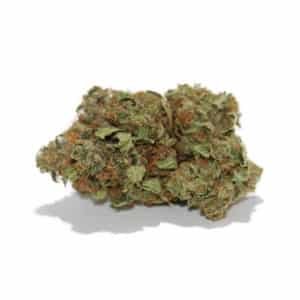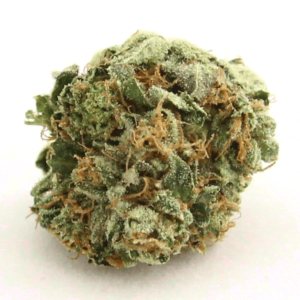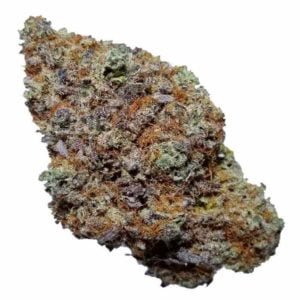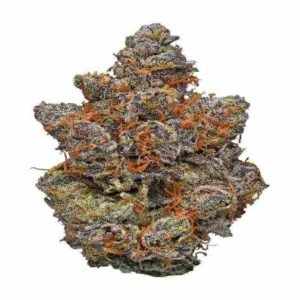Cannabis Flowers
Cannabis flowers, often referred to as buds, are the part of the cannabis plant that contains the highest concentration of cannabinoids, including THC (tetrahydrocannabinol) and CBD (cannabidiol). These flowers are harvested, dried, and cured for use in various forms such as smoking, vaping, or extraction into oils and edibles.
Characteristics of Cannabis Flowers
- Appearance: Cannabis flowers vary widely in color, shape, and size, often influenced by the strain. They can range from bright green to deep purple, with trichomes (tiny, crystal-like structures) giving them a frosty appearance. The presence of orange, red, or purple hairs, known as pistils, is also common.
- Aroma and Flavor: The terpenes in cannabis flowers are responsible for their distinctive aromas and flavors, which can range from fruity and sweet to earthy and pungent. Popular terpene profiles include limonene (citrus), myrcene (earthy), and pinene (pine).
- Potency: The potency of cannabis flowers is measured by their THC and CBD content. THC is the psychoactive component that induces the “high,” while CBD is non-psychoactive and is often used for its therapeutic properties.
Types of Cannabis Flowers
Cannabis flowers are categorized into three primary types based on their plant species:
- Indica: Typically associated with relaxing effects, Indica strains are often used to alleviate anxiety, pain, and insomnia. They usually have a shorter, bushier appearance with broad leaves.
- Sativa: Known for their energizing and uplifting effects, Sativa strains are often used to enhance creativity and focus. These plants are taller with thinner leaves and take longer to mature.
- Hybrid: Hybrid strains are crossbred from Indica and Sativa plants, offering a balance of effects. They can be tailored to provide specific benefits, combining the best qualities of both Indica and Sativa.
Uses of Cannabis Flowers
- Smoking: The most traditional method, where dried cannabis flowers are rolled into joints, packed into pipes or bongs, and smoked.
- Vaping: A modern alternative to smoking, vaping involves heating the cannabis flower to a temperature that releases cannabinoids and terpenes without combustion.
- Edibles: Cannabis flowers can be infused into oils or butters, which are then used to make a variety of edible products like cookies, gummies, and beverages.
- Extracts and Concentrates: Cannabis flowers can be processed into concentrates like oils, waxes, and shatters, which are used for dabbing or added to other products for enhanced potency.
Medical and Recreational Use
Cannabis flowers are used both medically and recreationally. Medical use often involves strains high in CBD to treat conditions such as chronic pain, epilepsy, and anxiety, while recreational use typically focuses on strains high in THC for their euphoric effects.
Legal Considerations
The legal status of cannabis flowers varies widely across the world. In some places, cannabis is fully legal for both medical and recreational use, while in others, it remains illegal. It’s important to be aware of and comply with local laws and regulations regarding cannabis use and possession.
Conclusion
Cannabis flowers are the most sought-after part of the cannabis plant due to their high concentration of active compounds. Whether used for their medicinal properties or recreational enjoyment, understanding the characteristics and effects of different strains can help users make informed choices. As the legal landscape continues to evolve, the accessibility and acceptance of cannabis flowers are likely to expand.
Showing 1–12 of 27 results
-
Cannabis FlowersBuy Now
Acapulco Gold Strain
Original price was: $310.00.$150.00Current price is: $150.00. Add to cart -
Cannabis FlowersBuy Now
Afghan-Kush strain
Original price was: $310.00.$150.00Current price is: $150.00. Add to cart -
Cannabis FlowersBuy Now
AK-47 Flower Strain
Original price was: $310.00.$150.00Current price is: $150.00. Add to cart -
Cannabis FlowersBuy Now
Amnesia Haze Strain
Original price was: $310.00.$150.00Current price is: $150.00. Add to cart -
Cannabis FlowersBuy Now
Blackberry Kush Strain
Original price was: $310.00.$150.00Current price is: $150.00. Add to cart -
Cannabis FlowersBuy Now
Blue Dream Strain
Original price was: $310.00.$150.00Current price is: $150.00. Add to cart -
Cannabis FlowersBuy Now
Bubba Strain
Original price was: $310.00.$150.00Current price is: $150.00. Add to cart -
Cannabis FlowersBuy Now
Chemdawg flower strain
Original price was: $310.00.$150.00Current price is: $150.00. Add to cart -
Cannabis FlowersBuy Now
Cherry Pie Strain
Original price was: $310.00.$150.00Current price is: $150.00. Add to cart -
Cannabis FlowersBuy Now
Gelato Flower strain
Original price was: $310.00.$150.00Current price is: $150.00. Add to cart -
Cannabis FlowersBuy Now
Girl Scout Cookies Strain
Original price was: $310.00.$150.00Current price is: $150.00. Add to cart -
Cannabis FlowersBuy Now
Gorilla Glue strain
Original price was: $310.00.$150.00Current price is: $150.00. Add to cart












